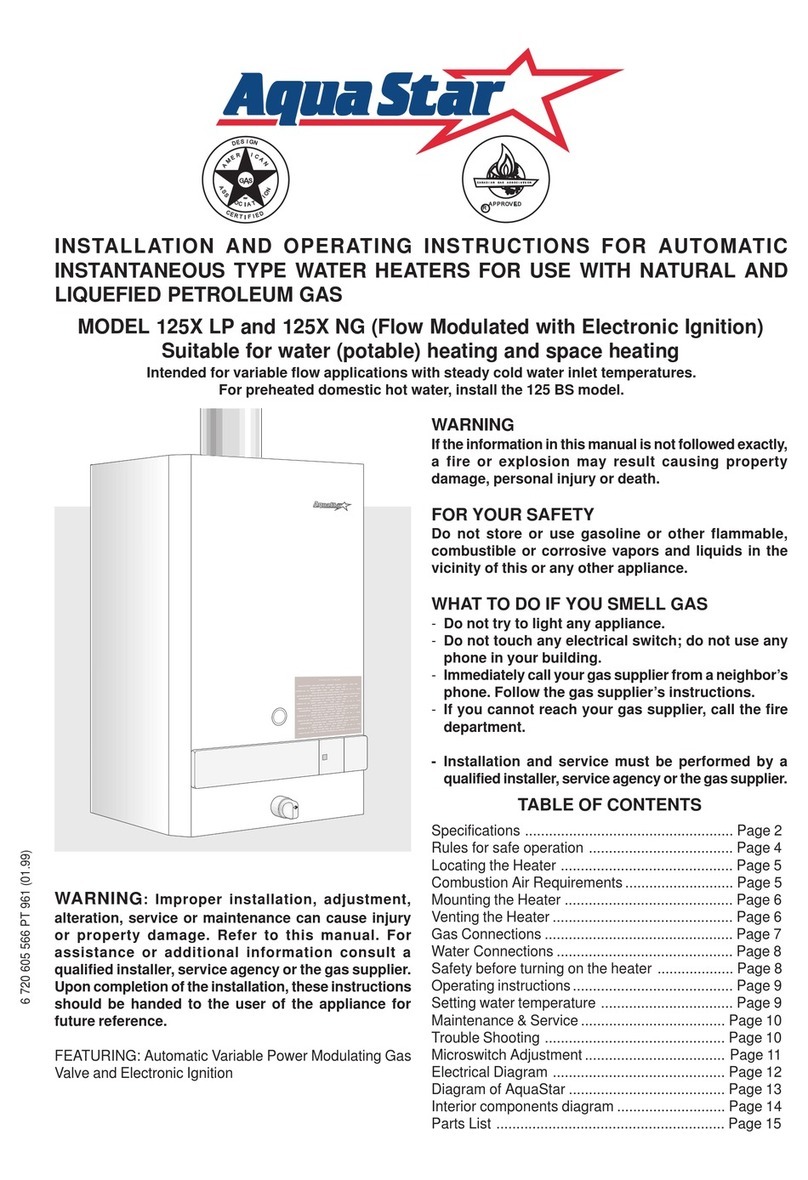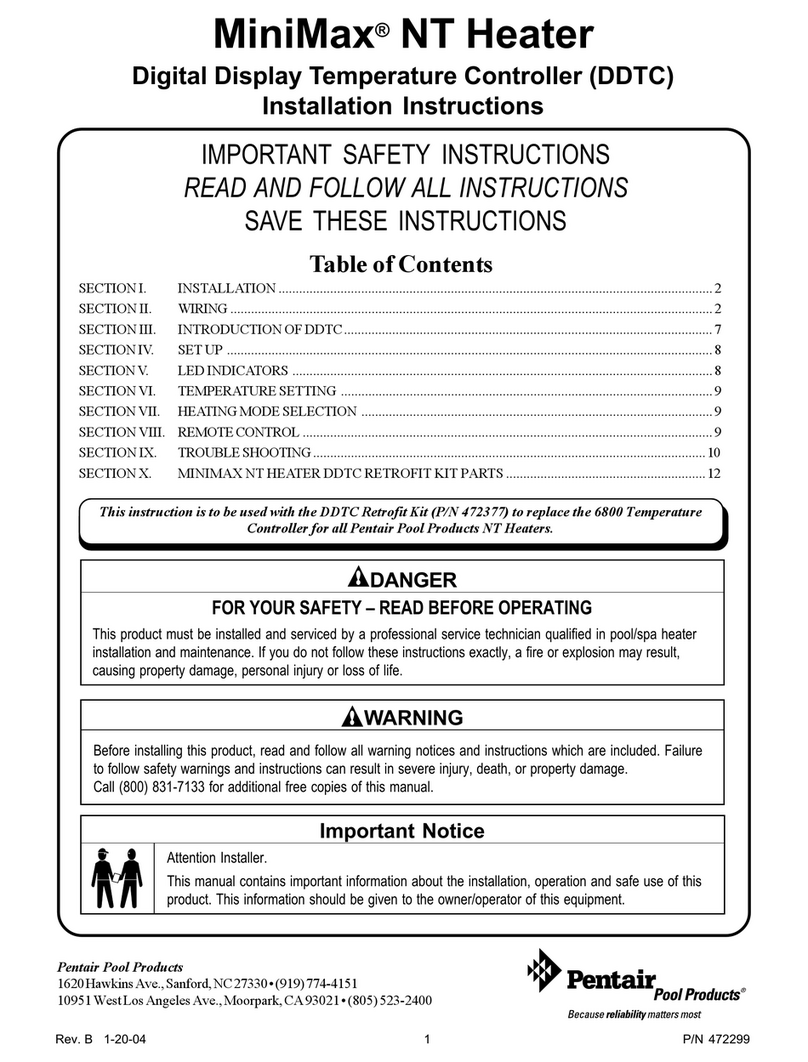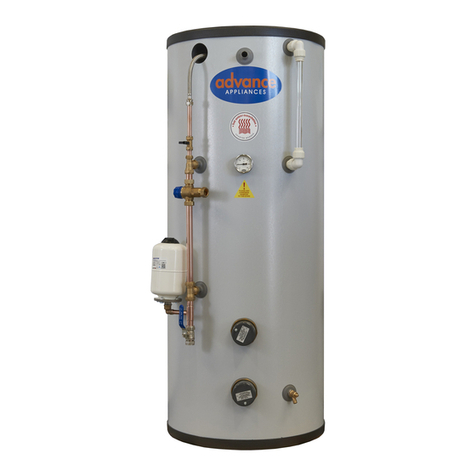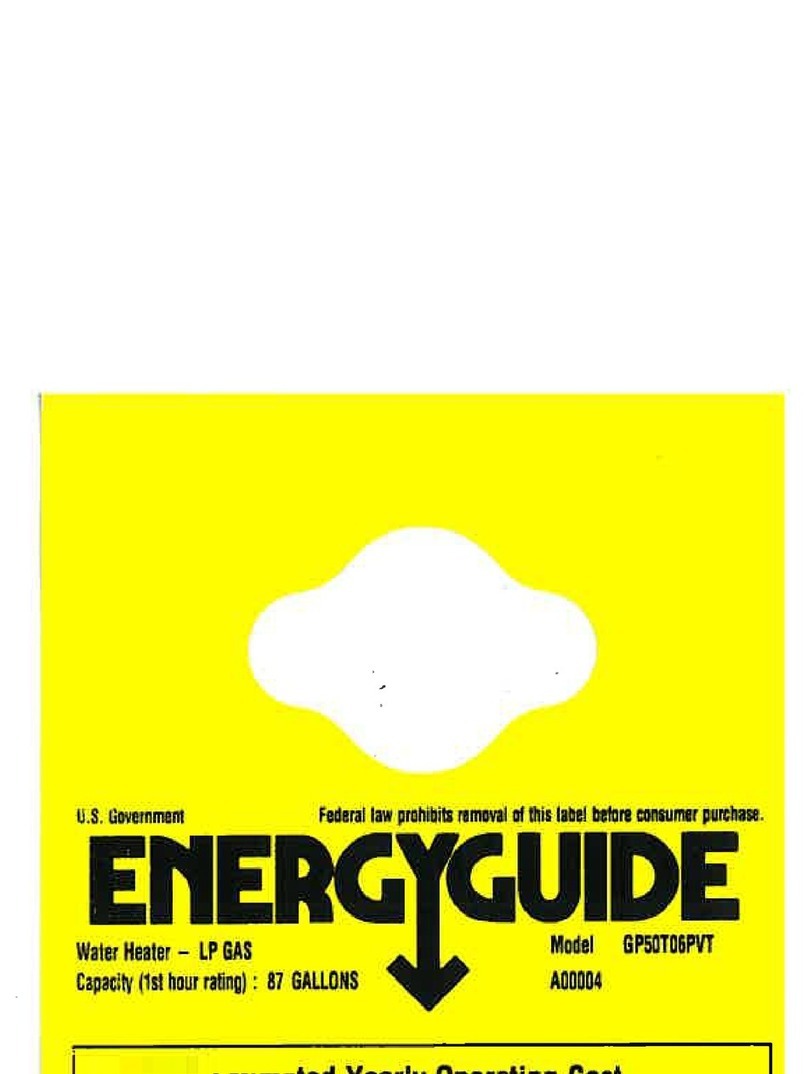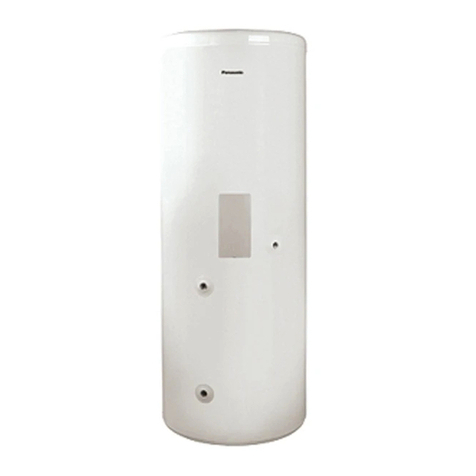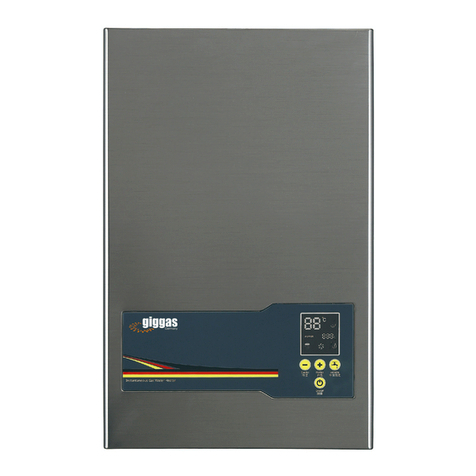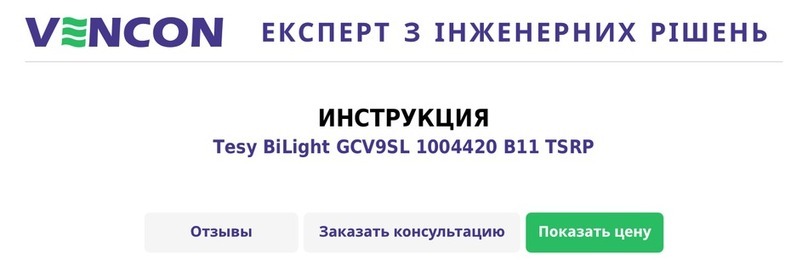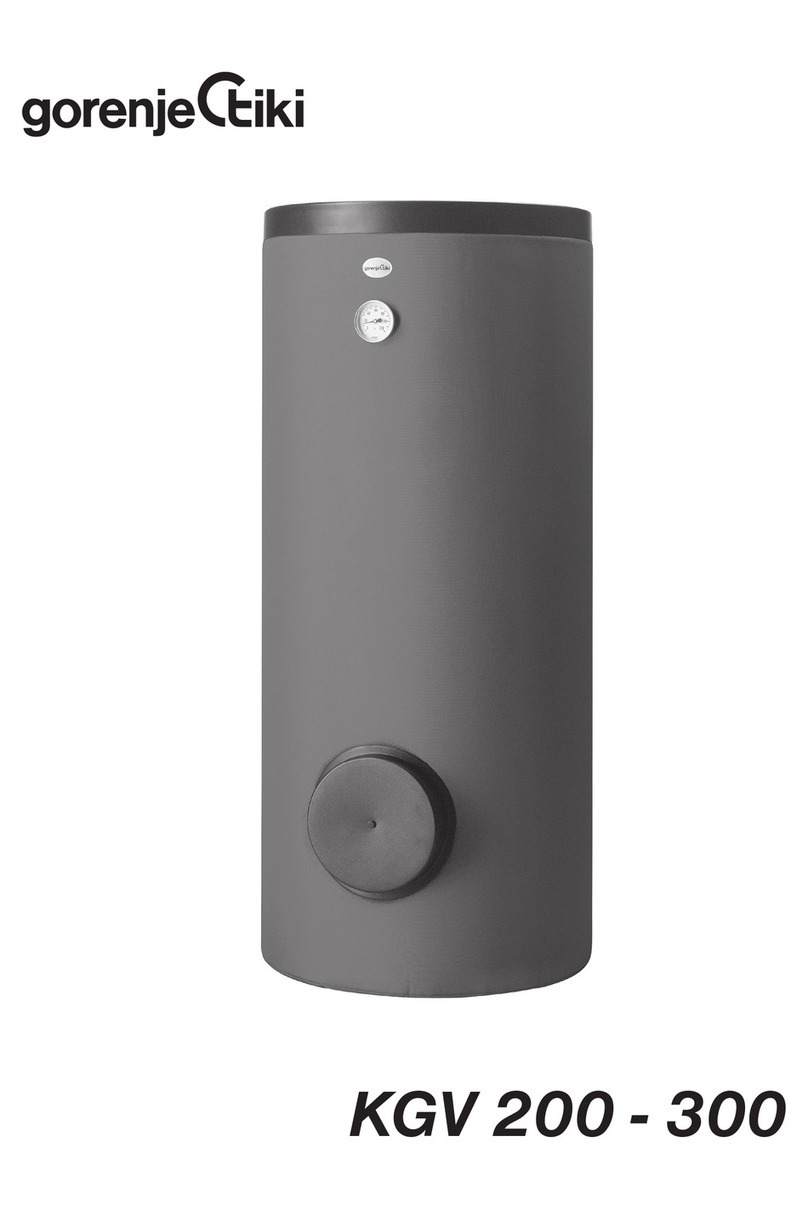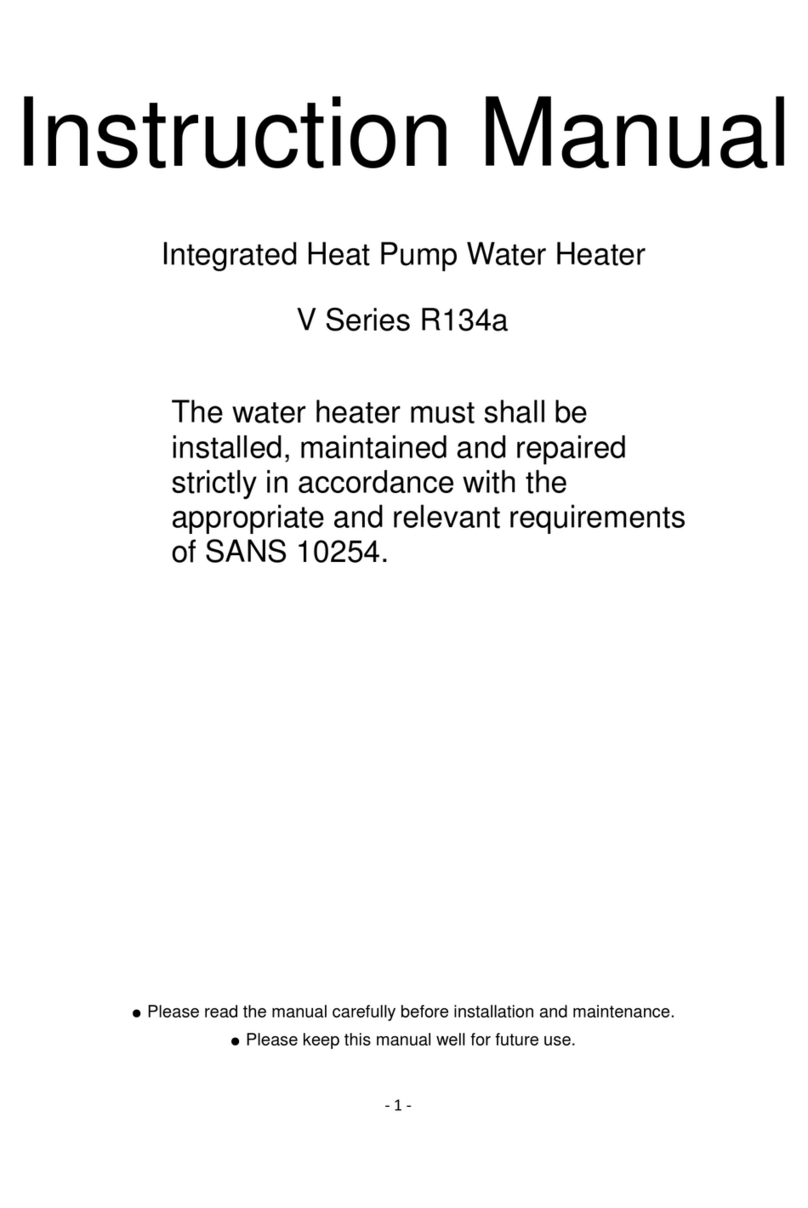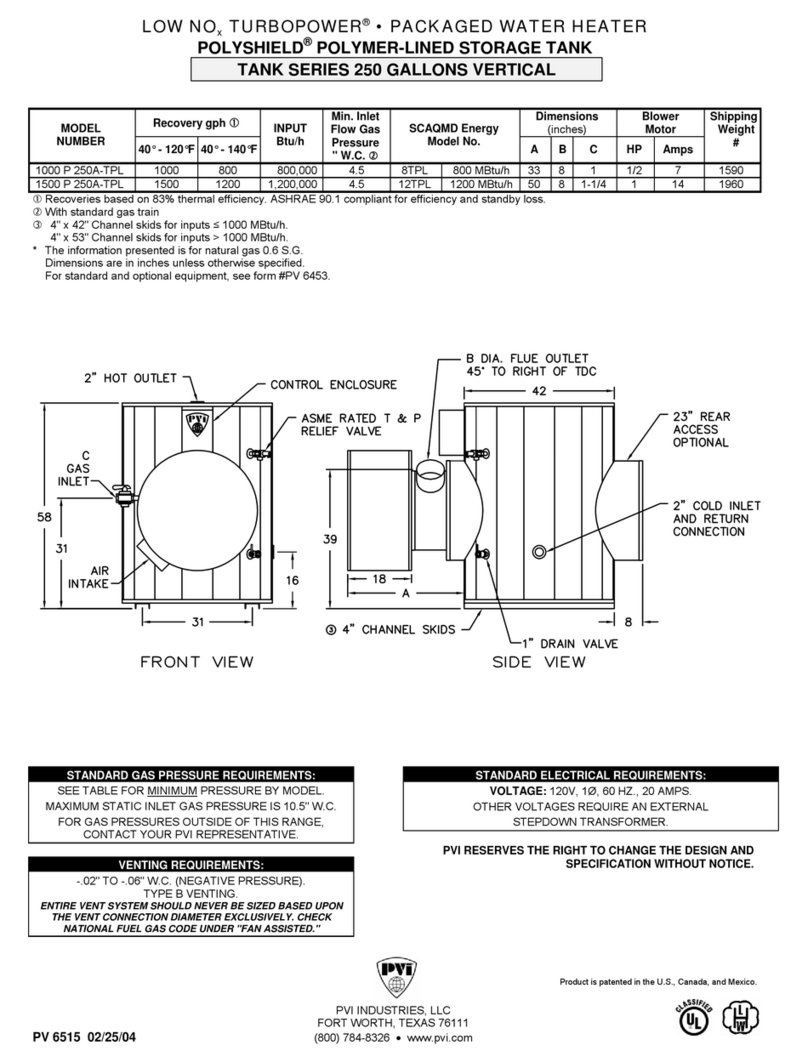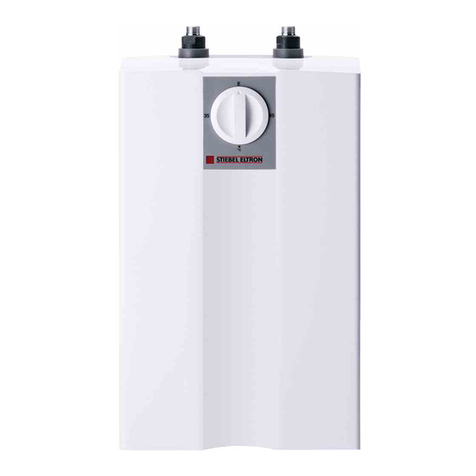
15
Remote HWG
Revised: March 12, 2019
climatemaster.com
Warranty
&/,0$7(0$67(5,1&
/,0,7('(;35(66:$55$17</,0,7$7,212)5(0(',(6$1'/,$%,/,7<)25
5(6,'(17,$/&/$66352'8&76:,7+/$%25$//2:$1&(
,WLVH[SUHVVO\XQGHUVWRRGWKDWXQOHVVDVWDWHPHQWLVVSHFL¿FDOO\LGHQWL¿HGDVDZDUUDQW\VWDWHPHQWVPDGHE\&OLPDWH0DVWHU,QFD'HODZDUHFRUSRUDWLRQ³&0´RULWVUHSUHVHQWDWLYHVUHODWLQJWR&0¶VSURGXFWVZKHWKHURUDOZULWWHQRUFRQWDLQHG
LQDQ\VDOHVOLWHUDWXUHFDWDORJRUDJUHHPHQWDUHQRWH[SUHVVZDUUDQWLHVDQGGRQRWIRUPDSDUWRIWKHEDVLVRIWKHEDUJDLQEXWDUHPHUHO\&0¶VRSLQLRQRUFRPPHQGDWLRQRI&0¶VSURGXFWV(;&(37$663(&,),&$//<6(7)257+
+(5(,17+(5(,612(;35(66:$55$17<$672$1<2)&0¶6352'8&76&00$.(612:$55$17<$*$,167/$7(17'()(&76&00$.(612:$55$17<2)0(5&+$17$%,/,7<2)7+(
*22'6252)7+(),71(662)7+(*22'6)25$1<3$57,&8/$5385326(
*5$172)/,0,7('(;35(66:$55$17<
&0ZDUUDQWVLWV5HVLGHQWLDO&ODVVSURGXFWVSXUFKDVHGDQGUHWDLQHGLQWKH8QLWHG6WDWHVRI$PHULFDDQG&DQDGDWREHIUHHIURPGHIHFWVLQPDWHULDODQGZRUNPDQVKLSXQGHUQRUPDOXVHDQGPDLQWHQDQFHDVIROORZV$LUFRQGLWLRQLQJKHDWLQJ
DQGRUKHDWSXPSXQLWVEXLOWRUVROGE\&0³&08QLWV´IRUWHQ\HDUVIURPWKH:DUUDQW\,QFHSWLRQ'DWHDVGH¿QHGEHORZ7KHUPRVWDWVDX[LOLDU\HOHFWULFKHDWHUVDQGJHRWKHUPDOSXPSLQJPRGXOHVEXLOWRUVROGE\&0ZKHQLQVWDOOHG
ZLWK&08QLWVIRUWHQ\HDUVIURPWKH:DUUDQW\,QFHSWLRQ'DWHDVGH¿QHGEHORZDQG2WKHUDFFHVVRULHVDQGSDUWVEXLOWRUVROGE\&0ZKHQLQVWDOOHGZLWK&08QLWVIRURQH\HDUIURPWKHGDWHRIVKLSPHQWIURP&07KH³:DUUDQW\
,QFHSWLRQ'DWH´VKDOOEHWKHGDWHRIRULJLQDOXQLWLQVWDOODWLRQRUVL[PRQWKVIURPGDWHRIXQLWVKLSPHQWIURP&0ZKLFKHYHUFRPHV¿UVW
7RPDNHDFODLPXQGHUWKLVZDUUDQW\SDUWVPXVWEHUHWXUQHGWR&0LQ2NODKRPD&LW\2NODKRPDIUHLJKWSUHSDLGQRODWHUWKDQQLQHW\GD\VDIWHUWKHGDWHRIWKHIDLOXUHRIWKHSDUWLI&0GHWHUPLQHVWKHSDUWWREHGHIHFWLYHDQGZLWKLQ&0¶V
/LPLWHG([SUHVV:DUUDQW\&0VKDOOZKHQVXFKSDUWKDVEHHQHLWKHUUHSODFHGRUUHSDLUHGUHWXUQVXFKWRDIDFWRU\UHFRJQL]HGGLVWULEXWRUGHDOHURUVHUYLFHRUJDQL]DWLRQ)2%&02NODKRPD&LW\2NODKRPDIUHLJKWSUHSDLG7KHZDUUDQW\RQ
DQ\SDUWUHSDLUHGRUUHSODFHGXQGHUZDUUDQW\H[SLUHVDWWKHHQGRIWKHRULJLQDOZDUUDQW\SHULRG
7KLV/LPLWHG([SUHVV:DUUDQW\VKDOOFRYHUWKHODERULQFXUUHGE\&0DXWKRUL]HGVHUYLFHSHUVRQQHOLQFRQQHFWLRQZLWKWKHLQVWDOODWLRQRIDQHZRUUHSDLUHGZDUUDQW\SDUWWKDWLVFRYHUHGE\WKLV/LPLWHG([SUHVV:DUUDQW\RQO\WRWKHH[WHQW
VSHFL¿FDOO\VHWIRUWKLQWKHWKHQH[LVWLQJODERUDOORZDQFHVFKHGXOHSURYLGHGE\&0¶V:DUUDQW\'HSDUWPHQWDQGRQO\DVIROORZV&08QLWVIRU¿YH\HDUVIURPWKH:DUUDQW\,QFHSWLRQ'DWH7KHUPRVWDWVDX[LOLDU\HOHFWULFKHDWHUVDQG
JHRWKHUPDOSXPSLQJPRGXOHVEXLOWRUVROGE\&0ZKHQLQVWDOOHGZLWK&08QLWVIRU¿YH\HDUVIURPWKH:DUUDQW\,QFHSWLRQ'DWH$FWXDO/DERUFRVWVDUHQRWFRYHUHGE\WKLV/LPLWHG([SUHVV:DUUDQW\WRWKHH[WHQWWKH\H[FHHGWKHDPRXQW
DOORZHGXQGHUVDLGDOORZDQFHVFKHGXOHWKH\DUHQRWVSHFL¿FDOO\SURYLGHGIRULQVDLGDOORZDQFHVFKHGXOHWKH\DUHQRWWKHUHVXOWRIZRUNSHUIRUPHGE\&0DXWKRUL]HGVHUYLFHSHUVRQQHOWKH\DUHLQFXUUHGLQFRQQHFWLRQZLWKDSDUWQRWFRYHUHGE\
WKLV/LPLWHG([SUHVV:DUUDQW\RUWKH\DUHLQFXUUHGPRUHWKDQWKHWLPHSHULRGVVHWIRUWKLQWKLVSDUDJUDSKDIWHUWKH:DUUDQW\,QFHSWLRQ'DWH
7KLVZDUUDQW\GRHVQRWFRYHUDQGGRHVQRWDSSO\WR$LU¿OWHUVIXVHVUHIULJHUDQWÀXLGVRLO3URGXFWVUHORFDWHGDIWHULQLWLDOLQVWDOODWLRQ$Q\SRUWLRQRUFRPSRQHQWRIDQ\V\VWHPWKDWLVQRWVXSSOLHGE\&0UHJDUGOHVVRIWKHFDXVHRIWKH
IDLOXUHRIVXFKSRUWLRQRUFRPSRQHQW3URGXFWVRQZKLFKWKHXQLWLGHQWL¿FDWLRQWDJVRUODEHOVKDYHEHHQUHPRYHGRUGHIDFHG3URGXFWVRQZKLFKSD\PHQWWR&0RUWRWKHRZQHU¶VVHOOHURULQVWDOOLQJFRQWUDFWRULVLQGHIDXOW3URGXFWV
VXEMHFWHGWRLPSURSHURULQDGHTXDWHLQVWDOODWLRQPDLQWHQDQFHUHSDLUZLULQJRUYROWDJHFRQGLWLRQV3URGXFWVVXEMHFWHGWRDFFLGHQWPLVXVHQHJOLJHQFHDEXVH¿UHÀRRGOLJKWQLQJXQDXWKRUL]HGDOWHUDWLRQPLVDSSOLFDWLRQFRQWDPLQDWHG
RUFRUURVLYHDLURUOLTXLGVXSSO\RSHUDWLRQDWDEQRUPDODLURUOLTXLGWHPSHUDWXUHVRUÀRZUDWHVRURSHQLQJRIWKHUHIULJHUDQWFLUFXLWE\XQTXDOL¿HGSHUVRQQHO0ROGIXQJXVRUEDFWHULDGDPDJHV&RUURVLRQRUDEUDVLRQRIWKHSURGXFW
3URGXFWVVXSSOLHGE\RWKHUV3URGXFWVZKLFKKDYHEHHQRSHUDWHGLQDPDQQHUFRQWUDU\WR&0¶VSULQWHGLQVWUXFWLRQV3URGXFWVZKLFKKDYHLQVXI¿FLHQWSHUIRUPDQFHDVDUHVXOWRILPSURSHUV\VWHPGHVLJQRULPSURSHUDSSOLFDWLRQ
LQVWDOODWLRQRUXVHRI&0¶VSURGXFWVRU(OHFWULFLW\RUIXHOFRVWVRUDQ\LQFUHDVHVRUXQUHDOL]HGVDYLQJVLQVDPHIRUDQ\UHDVRQZKDWVRHYHU
7KLV/LPLWHG([SUHVV:DUUDQW\SURYLGHVWKHOLPLWHGODERUDOORZDQFHFRYHUDJHDVVHWIRUWKDERYH2WKHUZLVH&0LVQRWUHVSRQVLEOHIRU7KHFRVWVRIDQ\ÀXLGVUHIULJHUDQWRUV\VWHPFRPSRQHQWVVXSSOLHGE\RWKHUVRUDVVRFLDWHGODERUWRUHSDLU
RUUHSODFHWKHVDPHZKLFKLVLQFXUUHGDVDUHVXOWRIDGHIHFWLYHSDUWFRYHUHGE\&0¶V/LPLWHG([SUHVV:DUUDQW\7KHFRVWVRIODERUUHIULJHUDQWPDWHULDOVRUVHUYLFHLQFXUUHGLQGLDJQRVLVDQGUHPRYDORIWKHGHIHFWLYHSDUWRULQREWDLQLQJDQG
UHSODFLQJWKHQHZRUUHSDLUHGSDUW7UDQVSRUWDWLRQFRVWVRIWKHGHIHFWLYHSDUWIURPWKHLQVWDOODWLRQVLWHWR&0RURIWKHUHWXUQRIWKDWSDUWLIQRWFRYHUHGE\&0¶V/LPLWHG([SUHVV:DUUDQW\RU7KHFRVWVRIQRUPDOPDLQWHQDQFH
7KLV/LPLWHG([SUHVV:DUUDQW\DSSOLHVWR&05HVLGHQWLDO&ODVVSURGXFWVRUGHUHGIURP&0RQRUDIWHU0D\WKLVZRXOGJHQHUDOO\LQFOXGH&08QLWVZLWKVHULDOQXPEHUVEHJLQQLQJZLWK³1´DQGKLJKHUDQGLVQRWUHWURDFWLYHWRDQ\
SURGXFWVRUGHUHGIURP&0SULRUWR0D\WKLVZRXOGJHQHUDOO\LQFOXGH&08QLWVZLWKVHULDOQXPEHUVEHJLQQLQJZLWK³1´DQGORZHU,I\RXDUHXQVXUHLIWKLV/LPLWHG([SUHVV:DUUDQW\DSSOLHVWRWKHSURGXFW\RXKDYHSXUFKDVHG
FRQWDFW&0DWWKHSKRQHQXPEHURUDGGUHVVUHÀHFWHGEHORZ
/LPLWDWLRQ7KLV/LPLWHG([SUHVV:DUUDQW\LVJLYHQLQOLHXRIDOORWKHUZDUUDQWLHV,IQRWZLWKVWDQGLQJWKHGLVFODLPHUVFRQWDLQHGKHUHLQLWLVGHWHUPLQHGWKDWRWKHUZDUUDQWLHVH[LVWDQ\VXFKH[SUHVVZDUUDQW\LQFOXGLQJZLWKRXWOLPLWDWLRQDQ\
H[SUHVVZDUUDQWLHVRUDQ\LPSOLHGZDUUDQWLHVRI¿WQHVVIRUSDUWLFXODUSXUSRVHDQGPHUFKDQWDELOLW\VKDOOEHOLPLWHGWRWKHGXUDWLRQRIWKH/LPLWHG([SUHVV:DUUDQW\
/,0,7$7,212)5(0(',(6
,QWKHHYHQWRIDEUHDFKRIWKH/LPLWHG([SUHVV:DUUDQW\&0ZLOORQO\EHREOLJDWHGDW&0¶VRSWLRQWRUHSDLUWKHIDLOHGSDUWRUXQLWRUWRIXUQLVKDQHZRUUHEXLOWSDUWRUXQLWLQH[FKDQJHIRUWKHSDUWRUXQLWZKLFKKDVIDLOHG,IDIWHUZULWWHQQRWLFH
WR&0¶VIDFWRU\LQ2NODKRPD&LW\2NODKRPDRIHDFKGHIHFWPDOIXQFWLRQRURWKHUIDLOXUHDQGDUHDVRQDEOHQXPEHURIDWWHPSWVE\&0WRFRUUHFWWKHGHIHFWPDOIXQFWLRQRURWKHUIDLOXUHDQGWKHUHPHG\IDLOVRILWVHVVHQWLDOSXUSRVH&0VKDOO
UHIXQGWKHSXUFKDVHSULFHSDLGWR&0LQH[FKDQJHIRUWKHUHWXUQRIWKHVROGJRRGV6DLGUHIXQGVKDOOEHWKHPD[LPXPOLDELOLW\RI&07+,65(0('<,67+(62/($1'(;&/86,9(5(0('<2)7+(%8<(525385&+$6(5
$*$,167&0)25%5($&+2)&2175$&7)257+(%5($&+2)$1<:$55$17<25)25&0¶61(*/,*(1&(25,1675,&7/,$%,/,7<
/,0,7$7,212)/,$%,/,7<
&0VKDOOKDYHQROLDELOLW\IRUDQ\GDPDJHVLI&0¶VSHUIRUPDQFHLVGHOD\HGIRUDQ\UHDVRQRULVSUHYHQWHGWRDQ\H[WHQWE\DQ\HYHQWVXFKDVEXWQRWOLPLWHGWRDQ\ZDUFLYLOXQUHVWJRYHUQPHQWUHVWULFWLRQVRUUHVWUDLQWVVWULNHVRU
ZRUNVWRSSDJHV¿UHÀRRGDFFLGHQWVKRUWDJHVRIWUDQVSRUWDWLRQIXHOPDWHULDORUODERUDFWVRI*RGRUDQ\RWKHUUHDVRQEH\RQGWKHVROHFRQWURORI&0&0(;35(66/<',6&/$,06$1'(;&/8'(6$1</,$%,/,7<)25
&216(48(17,$/25,1&,'(17$/'$0$*(,1&2175$&7)25%5($&+2)$1<(;35(6625,03/,(':$55$17<25,17257:+(7+(5)25&0¶V1(*/,*(1&(25$6675,&7/,$%,/,7<
2%7$,1,1*:$55$17<3(5)250$1&(
1RUPDOO\WKHGHDOHURUVHUYLFHRUJDQL]DWLRQZKRLQVWDOOHGWKHSURGXFWVZLOOSURYLGHZDUUDQW\SHUIRUPDQFHIRUWKHRZQHU6KRXOGWKHLQVWDOOHUEHXQDYDLODEOHFRQWDFWDQ\&0UHFRJQL]HGGLVWULEXWRUGHDOHURUVHUYLFHRUJDQL]DWLRQ,IDVVLVWDQFHLV
UHTXLUHGLQREWDLQLQJZDUUDQW\SHUIRUPDQFHZULWHRUFDOO
&OLPDWH0DVWHU,QF&XVWRPHU6HUYLFH6:WK6WUHHW2NODKRPD&LW\2NODKRPDHVHUYLFH#FOLPDWHPDVWHUFRP
127(6RPHVWDWHVRU&DQDGLDQSURYLQFHVGRQRWDOORZOLPLWDWLRQVRQKRZORQJDQLPSOLHGZDUUDQW\ODVWVRUWKHOLPLWDWLRQRUH[FOXVLRQVRIFRQVHTXHQWLDORULQFLGHQWDOGDPDJHVVRWKHIRUHJRLQJH[FOXVLRQVDQGOLPLWDWLRQVPD\QRWDSSO\WR\RX
7KLVZDUUDQW\JLYHV\RXVSHFL¿FOHJDOULJKWVDQG\RXPD\DOVRKDYHRWKHUULJKWVZKLFKYDU\IURPVWDWHWRVWDWHDQGIURP&DQDGLDQSURYLQFHWR&DQDGLDQSURYLQFH
3OHDVHUHIHUWRWKH&0,QVWDOODWLRQ2SHUDWLRQDQG0DLQWHQDQFH0DQXDOIRURSHUDWLQJDQGPDLQWHQDQFHLQVWUXFWLRQV 5HY
3DUW1R53
















